 |
 |
 |
| |
Heavily Pretreated US HIV Patients
Face Clinical Hurdles, Higher Death Risk
|
| |
| |
AIDS 2020: 23rd International AIDS Conference Virtual, July 6-10, 2020
Mark Mascolini
HIV-positive people with heavy antiretroviral experience have lower CD4 counts, less stable HIV control, and more comorbid conditions than people with less treatment experience, according to a 24,000-person analysis by OPERA cohort investigators [1]. Older age contributed to the higher death risk in the heavily treatment-experienced (HTE) group.
Heavy antiretroviral experience remains a loosely defined concept, although all veteran HIV clinicians have seen people who survived from before the days of triple therapy and have tried a long list of regimens that often end with virologic failure or intolerance. Even less is formally known about differences in clinical outcomes between HTE groups and those with a briefer antiretroviral history.
To address that last issue, OPERA investigators in the United States focused on antiretroviral-experienced HIV-1-positive people at least 18 years old, prescribed antiretrovirals since at least December 31, 2016, and still in active care. They divided these people into an HTE group, defined as people who (1) stopped a core agent from 3 or more antiretroviral classes or (2) were prescribed a regimen containing (a) dolutegravir twice daily, (b) darunavir twice daily, (c) etravirine, (d) an integrase inhibitor plus a protease inhibitor, (e) maraviroc, or (f) enfuvirtide. Non-HTE participants were taking one core agent plus two nucleos(t)ide reverse transcriptase inhibitors and did not meet the HTE definition.
The analysis included 2277 HTE participants and 21,906 non-HTE people. The HTE group was older (median 50 versus 44, P < 0.0001), had a higher proportion of women (19% versus 17%, P = 0.0068), and had more years since their HIV diagnosis (median 15.3 versus 7.1, P < 0.0001). Median baseline viral load proved higher in the HTE group (2.0 versus 1.3 log10, P < 0.0001) and baseline CD4 count lay lower (412 versus 587, P < 0.0001). Compared with non-HTE participants, the HTE group included a higher proportion with an AIDS event (54% versus 29%, P < 0.0001), a higher proportion with any comorbid condition (80% versus 69%, P < 0.0001), and a higher proportion taking any non-HIV medication (65% versus 51%, P < 0.0001).
Among people who had a detectable viral load at baseline, cumulative probability of pushing the load below 50 copies was lower in the HTE group than the non-HTE group after 12 months (69% versus 76%) and 24 months (80% versus 85%) but the same after 48 months (91%). Among people who attained viral suppression, cumulative probability of staying under 200 copies was consistently lower in the HTE group at 12 months (93% versus 95%), 24 months (86% versus 88%), and 48 months (75% versus 79%).
Similarly, among people with a baseline CD4 count above 200, cumulative probability of staying there in HTE participants slightly but consistently lagged that probability in the control group (90% versus 95% at 48 months). Probably because HTE people have few if any additional therapeutic options, their probability of maintaining their current regimen was slightly better than in the control group after 12, 24, and 48 months (57% versus 52% at 48 months).
Among 1527 HTE people with a follow-up viral load (whether detectable or undetectable at baseline), 238 (15.6%) had a viral load at or above 200 copies at 12 months. In contrast, among 15,199 non-HTE participants with a follow-up viral load (whether detectable or undetectable at baseline), only 1248 (8.2%) had a viral load above 200 copies at 12 months, a significant difference from the non-HTE group (P < 0.0001).
HTE participants did worse in three major clinical outcomes than their non-HTE counterparts: new AIDS-defining event (5% versus 2%), new non-AIDS comorbid condition (45% versus 35%), and death (2% versus 1%) (all P < 0.0001).
Because of the worse clinical outcomes and generally less favorable viral and CD4 numbers in HTE people, the investigators stressed the need for "additional therapeutic options ... for this vulnerable population."
Reference
1. Hsu R, Fusco J, Henegar C, et al. Clinical outcomes of heavily treatment experienced individuals in the OPERA cohort. AIDS 2020: 23rd International AIDS Conference Virtual. July 6-10, 2020. Abstract PEB0234.
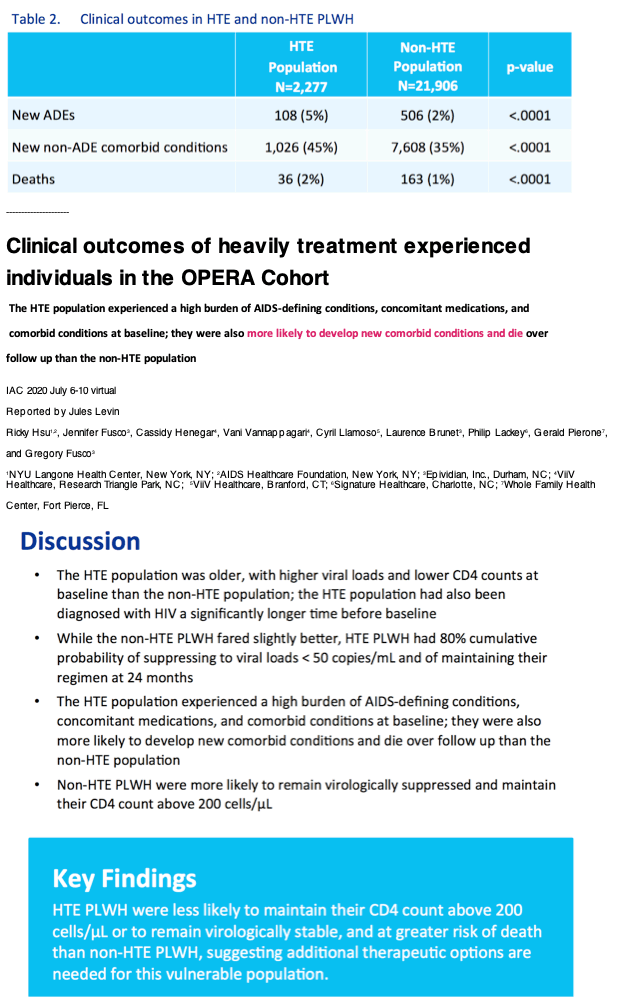
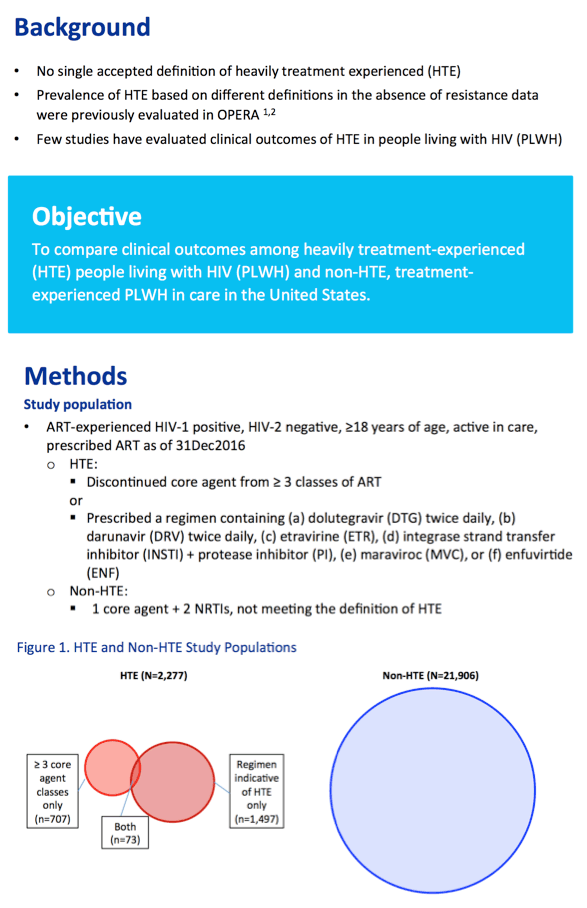
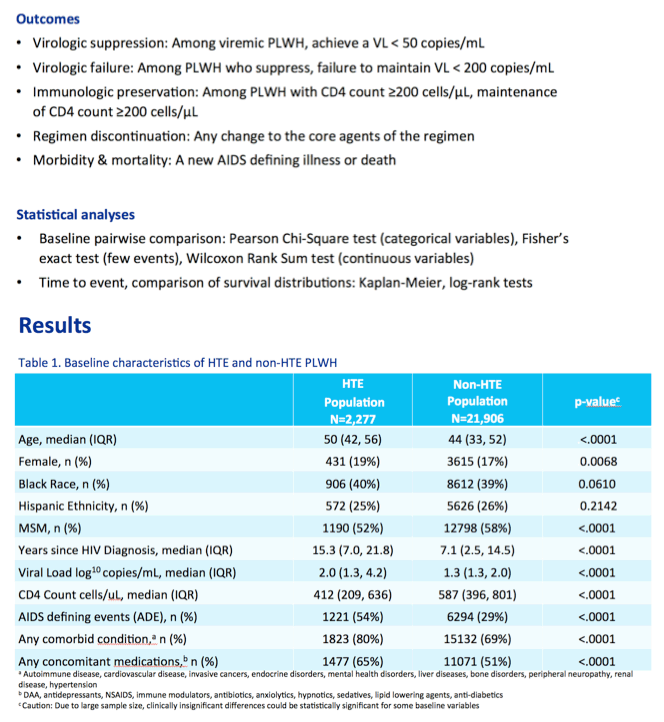
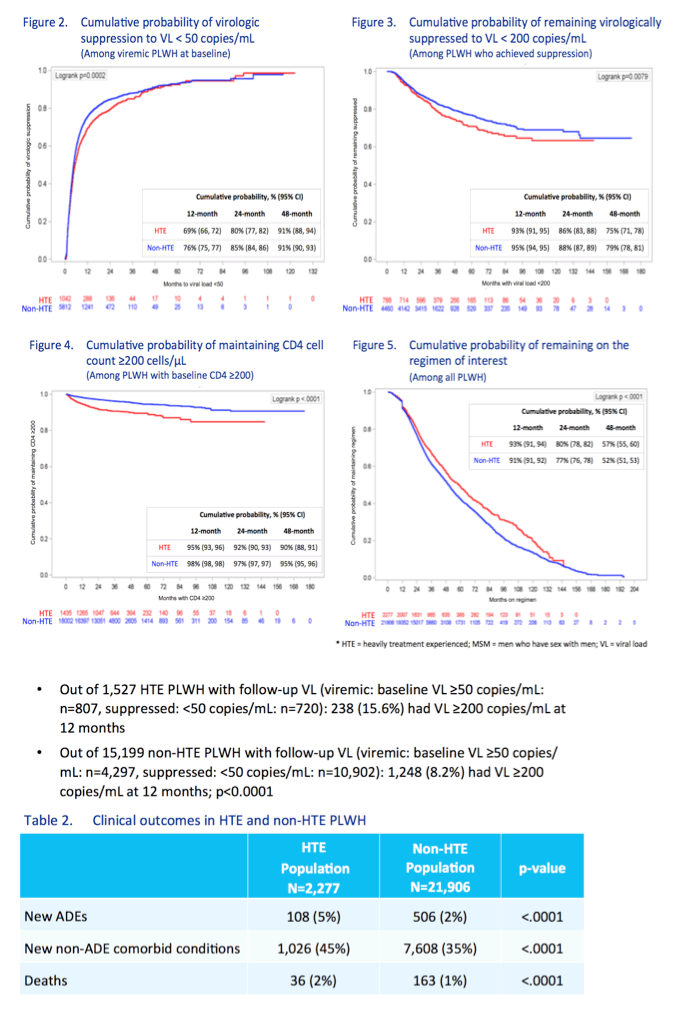
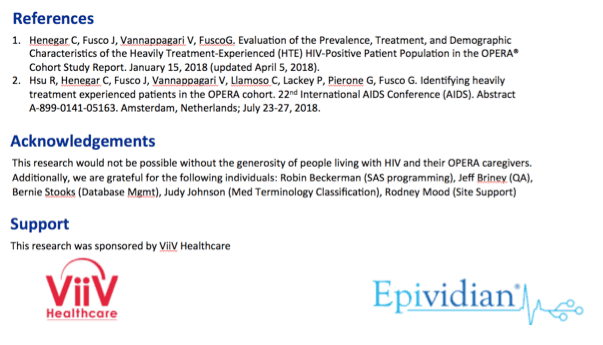
|
| |
|
 |
 |
|
|